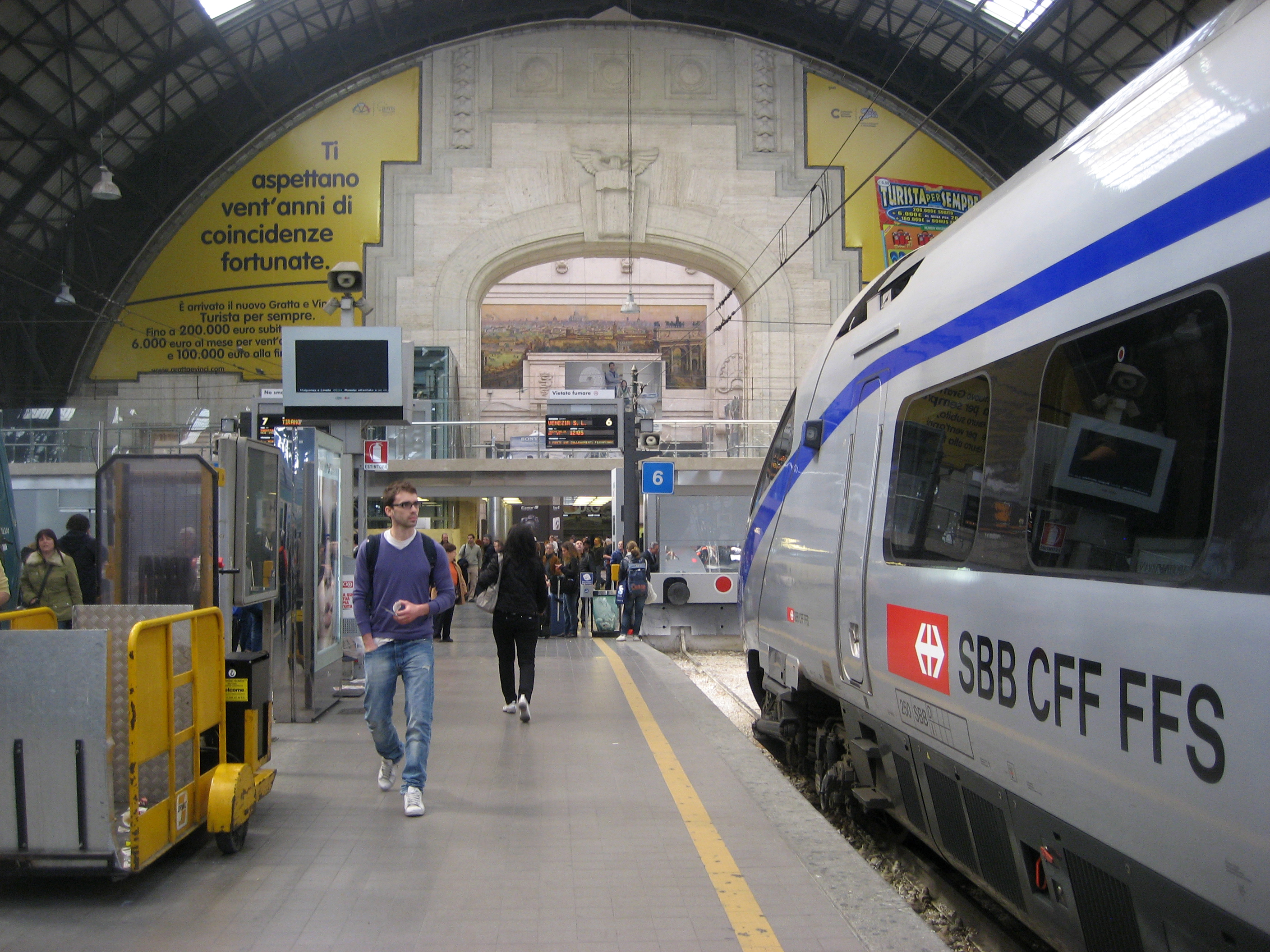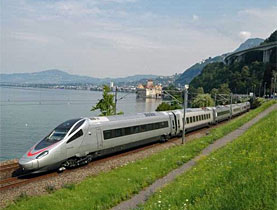Problems prevail along Gotthard railway axis

Hopes were high when Cisalpino, a subsidiary of Swiss Federal Railways and Trenitalia, was dissolved a year ago; yet problems remain.
Cisalpino, which handled passenger service between Switzerland and Italy, had come to stand for breakdowns and delays. But today, passengers have to change trains more often, resulting in tight connections, delays and longer travel time.
Many assumed that restoring jurisdiction to the national rail companies and splitting the fleet of first-generation tilting trains (ETR 470) would help solve the problems.
However, there have been only minimal improvements. Delays, cancellations and technical problems such as out of use toilets are still an issue – even more so in recent times.
Maintenance needed
“Technical problems involving the demanding ETR 470 fleet have gone down by 50 per cent since last year. Yet the availability of the trains has also decreased in the past two weeks,” noted Swiss Federal Railways in a statement last week.
Just days before the annual timetable change in mid-December, Federal Railways opted to replace some of its breakdown-prone ETR 470s with its own ICN tilting trains. But these will only operate between Zurich and the border station of Chiasso.
Passengers arriving there will have to transfer to a Trenitalia commuter train to Milan. This arrangement affects two of the seven daily “direct” connections and is expected to be the case until the end of January 2011.
During that time, Federal Railways plans for the ETR 470s to get a full overhaul in Milan workshops.
A step backwards
Over the Christmas holidays, Chiasso will turn into an international rail hub, along with the associated passenger inconveniences like baggage transport.
In addition, it is unsure whether Trenitalia will manage to provide a stable and punctual service. According to Federal Railways, the Milan transfer adds just four to eight minutes to the overall travel time. That could be tight for connections in Milan.
“The situation along the whole line is unsatisfactory,” according to Edwin Dutler, president of Pro Bahn Schweiz, the Swiss association of railway travellers.
Just every two hours
With a touch of nostalgia, Dutler recalls how the old Eurocity served Milan hourly and reliably. Now there are just seven connections per day, spaced two hours apart, not to mention the transfer in Chiasso.
“Federal Railways talks of a sophisticated fleet, but it’s ready for the junkyard,” Dutler said. As a tour guide, he has been criticising the situation along the Gotthard axis for a long time.
Not only are the trains from Milan to Zurich often late, they are often dirty as well, he said.
“During a trip in the summer, visitors from France were also appalled at the condition of the trains,” Dutler said.
Federal Railways spokesman Christian Ginsig agrees that there is room for improvement.
“The situation on the Gotthard axis is completely unsatisfactory,” Ginsig said. With the scheduled refurbishment it is hoped that the fleet’s worst problems will be solved.
Better in the west
In contrast to the route via the Gotthard Tunnel, the routes via the Simplon and Lötschberg tunnels are better off. The new ETR 610 tilting trains operate between Milan and Geneva, respectively Milan/Bern/Basel, without any major difficulties.
However, because commuter trains take priority in Italy, there are also delays for international trains along these routes. But at least the trains themselves are modern.
According to Federal Railways, customers have responded positively to the ETR 610s, in particular their comfort and design features.
Originally, Cisalpino ordered 14 ETR 610 trains for the Gotthard route. They were all meant to be in service by December 2007, but not all of the rolling stock has been delivered.
Like Trenitalia, Swiss Federal Railways currently has six of these trains.
The new Federal Railways schedule offers a Basel-Lucerne-Milan-Venice connection on an ETR 610 train, departing from Basel at 7.03am. It is the first time that this train will be used on this route.
However, because the trains don’t yet have permission to use the tilting technique along the Gotthard, they will travel more slowly than indicated by the official timetable.
This will lead to a delayed arrival in Milan – by about 20 minutes, in fact. Yet because of the planned waiting period of 45 minutes in Milan, Federal Railways expects passengers to arrive in Venice on schedule.
The delay on the way back to Basel is about the same, even though the waiting period is only 15 minutes. According to the schedule, the train gets back to Basel at 12.56pm – but it could be as late as 1.20am.
The whole journey takes about seven hours each way.
Between Zurich and Milan, Federal Railways sometimes uses ICN rather than ETR 470 trains. That means that some trips require passengers to change trains in Chiasso.
The following trains will be affected until January 31, 2011: EC 13 / EC 16 / EC 21 / EC 24.
Passengers can look up the train numbers and their schedules online.
(Translated from German by Susan Vogel-Misicka)

In compliance with the JTI standards
More: SWI swissinfo.ch certified by the Journalism Trust Initiative












You can find an overview of ongoing debates with our journalists here . Please join us!
If you want to start a conversation about a topic raised in this article or want to report factual errors, email us at english@swissinfo.ch.